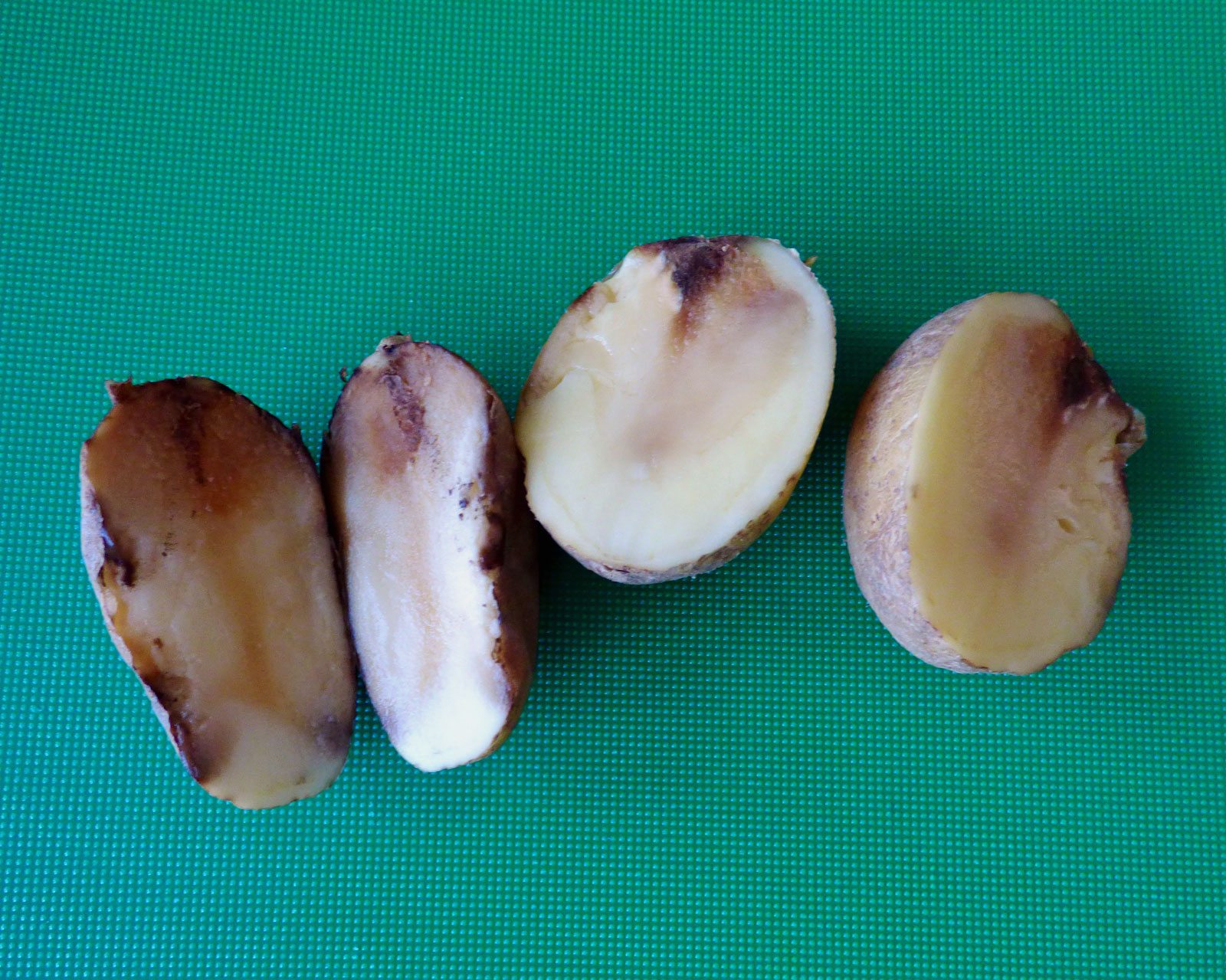Potato Soft Rot: Tips For Managing Bacterial Soft Rot Of Potatoes


Bacterial soft rot is a common problem in potato crops. What causes soft rot in potatoes and how can you avoid or treat this condition? Read on to find out.
About Potato Soft Rot
Soft rot disease of potato crops is commonly recognized by soft, wet, cream to tan colored flesh, normally surrounded by a dark brown to black ring. As this condition progresses, these necrotic spots begin to move from the outside or skin to the inside of the tuber. While there may not be any odors in the beginning of its progression, as bacterial soft rot in potatoes worsens, you will begin to notice an undeniably foul odor stemming from the infected potato. While bacterial soft rot disease survives in the soil and is caused by various types of bacteria, it isn't confined solely to the potatoes in the ground. The disease can affect harvested and stored potatoes as well.
How to Treat Soft Rot in Potatoes
Plant only certified, disease-free tubers. While fungicides will not affect the soft rot bacteria themselves, it does help prevent the secondary infections that increase the damage. If you use seed potatoes from your own stock, make sure the cut pieces have time to cure and treat them with a fungicide before planting. Keep bruising of seed potatoes to a minimum and clean your cutting tools thoroughly before and after use to prevent transferring the soft rot bacteria from one batch to another. If you choose not to cure your newly cut pieces, plant them immediately before condensation along the cut edges has time to form. Since bacterial soft rot thrives in water, avoid heavy watering of newly planted potatoes. Don't irrigate your beds until the plants have fully emerged. Avoid high nitrogen fertilizers since heavy top growth will provide a moist canopy and watch for low spots where rainwater collects. Plants grown in these areas are almost guaranteed to suffer from soft rot disease. Harvesting practices are also an important part of soft rot treatment. Potatoes should be dug after the vines are dead and brown. This will help to ensure that the skins are mature which gives better protection to the flesh beneath. Harvest your potatoes carefully. Cuts from digging forks and bruising from potatoes thrown onto the harvest pile both leave openings for the bacteria to invade. Severely injured potatoes should be eaten immediately as should all immature tubers. Tempting as it is, don't wash your potatoes before storage. Allow them to dry and brush the excess dirt from them and allow them to dry in a warm, dry place for one to two weeks before storing. This will heal minor nicks and cure the skins to make it more difficult for the soft rot bacteria to invade. Lastly, one of the most effective soft rot treatments for the home gardener is to thoroughly clean up all debris after harvest and rotate crops yearly, as the soil borne bacteria rarely lasts for more than a year. While there is no surefire soft rot treatment that will prevent the disease, and some of your potatoes may be affected no matter what, by following these simple procedures, you can minimize the damage to your potato crops.
Gardening tips, videos, info and more delivered right to your inbox!
Sign up for the Gardening Know How newsletter today and receive a free copy of our e-book "How to Grow Delicious Tomatoes".

Jackie Rhoades began writing for Gardening Know How in 2010.
-
 Looking For Plants To Give You The Soft And Fuzzies? Try These 5 Fuzzy Leaf Plant Options
Looking For Plants To Give You The Soft And Fuzzies? Try These 5 Fuzzy Leaf Plant OptionsLovers of texture, drama, silver foliage and tactile plants will adore these special sensory garden additions. These fuzzy leaf plant options will leave you all aglow
By Susan Albert
-
 Get Ready For A Summer Of Hummers! Grow These Full Sun Hummingbird Plants and Flowers
Get Ready For A Summer Of Hummers! Grow These Full Sun Hummingbird Plants and FlowersIf you’re lucky enough to enjoy a sunny backyard, make sure you are maxing out on your pollinator opportunities and grow these full sun hummingbird plants and flowers
By Tonya Barnett